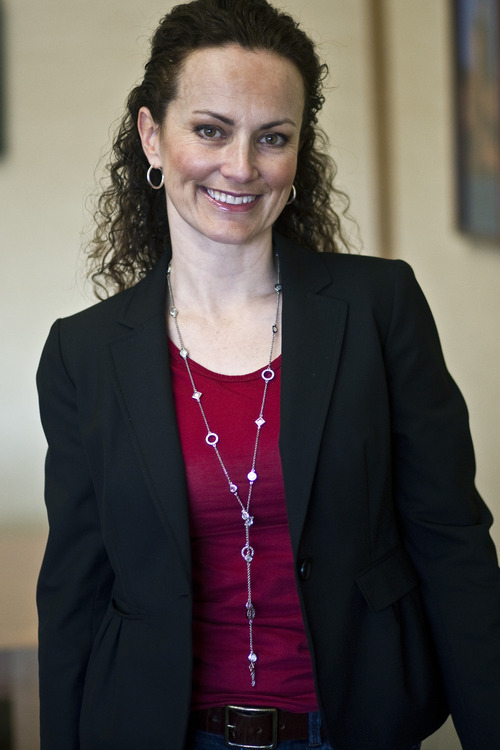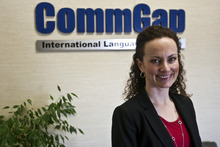This is an archived article that was published on sltrib.com in 2011, and information in the article may be outdated. It is provided only for personal research purposes and may not be reprinted.
Not many girls were thinking about starting their own businesses in the 1970s, but then, Lelani Craig had no ordinary childhood.
Craig's family was the only bilingual household in Rigby, Idaho. While attending high school, she was often called upon to interpret court proceedings for Spanish-speaking defendants.
Today, Craig directs Salt Lake City-based CommGap, which provides translation and interpretation services in more than 100 languages to businesses across the country.
Craig is among a growing number of Utah women who have started or expanded their own business. Hers is among the 65,100 women-owned firms in the state, employing 57,200 people, with revenue of more than $11 million.
Those numbers have propelled Utah into a No. 14 ranking nationally in the growth of women-owned firms and fourth in revenue growth for women's businesses since 1997, according to the American Express OPEN State of Women-Owned Businesses Report.
Nationally, the number of women-owned business has increased 50 percent from 1997 to 2011. By comparison, Utah's rate was 55 percent, and revenue growth was at 117.6 percent.
Julie Weeks, author of the Women-Owned Businesses Report, said women entrepreneurs have been able to become a force in the marketplace by taking advantage of resources their mothers didn't have.
"What's driving this is that more women are participating in the labor force, and they have a lot more managerial and executive experience," said Weeks. "Women also have more arrows in their quivers than they did 20 years ago, with more role models and mentors."
Women also are getting academic degrees in fields that lend themselves to business ownership, such as Master of Business Administration and law degrees and Certified Public Accountant licenses.
During the past 14 years, women have outpaced men when it comes to forming businesses, with the male rate growing by 25 percent, half the rate for women. And, revenue growth for men-owned firms increased by just 33 percent, compared to 53.4 percent for women's businesses.
For Craig, her path to success began with inspiration from her parents and encouragement from her high school principal. She used her courts interpreting job to help pay for college and later worked as a translator for The Church of Jesus Christ of Latter-day Saints.
In 1991, she started a home-based business as a Spanish translator and interpreter when the first two of her three children were toddlers. Since then, she has grown the business out of her home in Cottonwood Heights and into its Salt Lake City headquarters.
"I am a strong learner," said Craig. "When I need to know something, I learn it."
CommGap has expanded its services to include voice-overs, website and software localization, cultural consulting and training, as well as language assessment from offices in Salt Lake City and Houston, Texas.
Craig has four employees and works with more than 300 contractors in the United States and other countries. In Utah, she works with 60 interpreters for hospitals, health clinics and law firms.
She credits her success to using community resources, such as the Small Business Administration and the nonprofit Count Me In for Women's Economic Independence, which provides coaching and technical assistance.
Although Craig found her path through language, U.S. industries with the highest concentration of women-owned firms are health care and social assistance. Other popular sectors are educational services; personal services, such as beauty salons and dry cleaning; and administrative and waste services, such as employment and travel agencies, janitorial and convention organizers.
Industries with the lowest concentration of women-owned firms include construction and finance and insurance.
One motivation for Utah women to start their own business is related to pay, where they earn $14,600 less than their male counterparts annually — a gap that is the fourth largest in the nation. But Weeks said they are more likely to go out on their own for the same reason that men do — they see a need in the marketplace that they believe they can fill it.
"The primary motivation for men and women owning their own business is fulfilling their dreams, of wanting to be in charge of their own destinies."
Twitter: @DawnHouseTrib Areas where revenue grew the most from 1997 to 2011:
Wyoming 170 percent
District of Columbia 146.7 percent
New Hampshire 117.8 percent
Utah 117.6 percent
Louisiana 110.3 percent
Source: American Express OPEN —
So you want to start a business
How-to information and more on the study • http://www.OpenForum.com
The Small Business Administration • http://www.sba.gov
Count Me In for Women's Economic Independence • http://www.count-me-in.org









